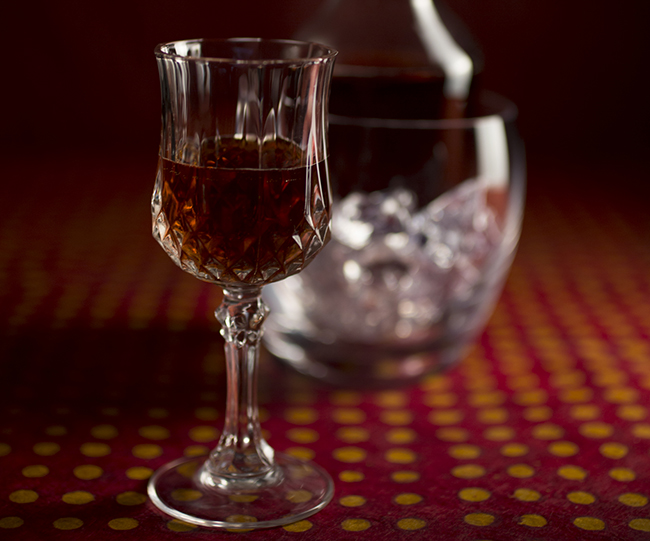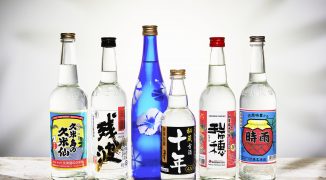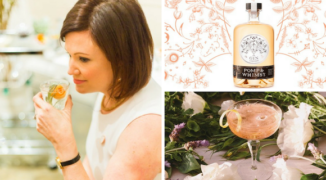We often think of sherry as a drink of the past, and in a way, that’s correct. The fortified wine underwent a boom, if you will, in the ‘70s, and then sort of faded away in terms of popularity. Though production and sales slowed in proceeding years, sherry never went away and now, decades later, it’s starting to experience a resurgence in the bar scene. Still, many are unfamiliar with it and could stand to use a refresher.
“Although sherry gained some exposure within the craft cocktail industry within the last few years, it is still a very obscure product for many of us,” says Dean Feddaoui, lead bartender at Lilt Lounge in Miami’s Epic Hotel. “What makes sherry special is the amount of care and dedication that goes into making it.”
Sherry making
As you’re probably aware, sherry is a fortified wine hailing from southern Spain. “Fortified,” in sherry’s case, means that it’s a wine in which another spirit has been added. For sherry, that spirit is often brandy, but it can also be another type of neutral-grain distilled spirit.
The actual production process is far more nuanced, and requires much more time, than many realize. First, grapes are harvested and fermented, like typical wine (and FYI: palomino, muscatel, and Pedro Ximenez are the three authorized grapes for sherry making). Then sherry goes through its fortification process. Next, it’s aged in 500-liter oak casks until “flor” (a yeast) develops on the top. The sherry is then transferred and undergoes the “solera” aging process.
Briefly, “solera” is the method of blending various ages of wine to help create a more uniform taste from year to year. It involves a lot of shuffling and adding and subtracting, but in the end, the oldest stuff gets poured into bottles. Typically, you’ll see sherry that’s been aged, on average, either 20 years (VOS, or Vinum Optimum Signatum) or 30 years (VORS, or Vinum Optimum Rare Signatum).
That’s the abbreviated rundown of the sherry making process, but you can see that it’s quite involved.
The different styles of sherry
Now that you know the “how it’s made” essentials, let’s talk about the different types of sherry. This all boils down to the environment in which it was fermented, the alcohol level, the presence of flor, and the fermentation process. Based on these factors, sherry can lean sweet, crisp, nutty, rich, light or a combination of all the above. The seven most common types are:
- Fino: This is a crisp, dry and yeasty sherry with 15% alcohol content.
- Manzanilla: A fino type of sherry from a more humid environment that makes for a very fresh taste.
- Amontillado: Another type of Fino, this one aged, that has a nutty, rich taste. It has about a 17% alcohol content.
- Palo Cortado: This is considered the middle ground between fino and amontillado. It’s nutty, but also fresh.
- Oloroso: This is a very rich and flavor-heavy sherry that’s undergone quite a bit of oxidation.
- Pedro Ximenez: A very sweet dessert sherry that’s been made from air-dried grapes.
- Cream: Considered a commercial type of product that’s been further sweetened by the addition of Moscatel and/or Pedro Ximinez.
You can read more in-depth profiles here.
How to use sherry in cocktails
Mixologist Paul Calvert, partner at Ticonderoga Club, says that when he first saw sherry hitting cocktail menus about four or five years ago, it was almost always a cream sherry used as a replacement for a different spirit – say, vermouth in your standard Manhattan. That works perfectly well, of course, but he urges bartenders to think beyond that when developing recipes.
To push yourself creatively, Calvert suggests combining sherry with an unexpected spirit, such as tequila or gin, both of which he refers to as “great friends” to lighter styles of sherry.
“If you can utilize sherry for its brighter, higher-note qualities — as a supplement or replacement for acidic qualities or drier qualities in cocktails — I think it can be really fun, elevating ingredient,” he says.
One of his favorite recipes utilizing sherry is a low-alcohol suppressor. It combines equal parts Italian vermouth, amontillado sherry (drier, the better), cynar and a dash or two of orange bitters over ice with a lemon twist garnish. “It’s really friendly, the sherry shines, and it’s very easy to make,” he says.
Feddoui adds that because sherry comes in such a broad range of flavor profiles – “from completely dry with citrus notes to dark, velvety and plum notes” – his personal goal is to show off that versatility. He suggests using dry sherry types (Fino and Manzanilla) to add a dry balance to citrusy drinks, and recommends using sweeter, denser sherry (Oloroso and Pedro Ximinez), in brown spirit applications such as Old Fashioneds and Manhattans.
When pouring sherry as a standalone, Feddaoui says he prefers to deliver it slightly chilled and served neat.





